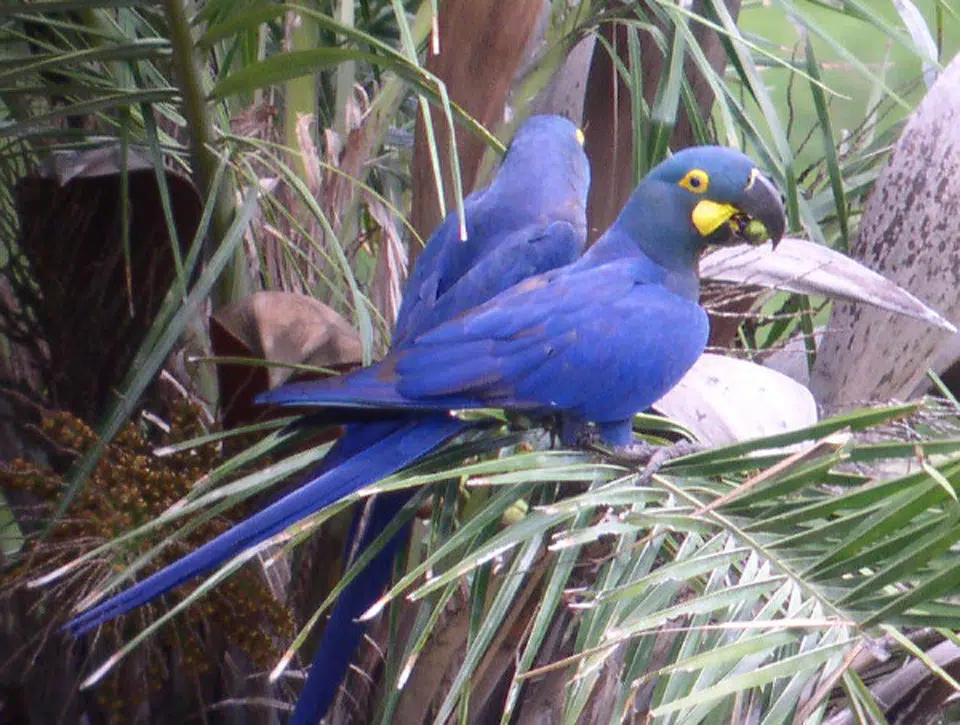
If you’ve traveled with us before, I’m sure you’ve heard tall tales and humorous anecdotes from your guides. Over nearly 25 years of Field Guiding, we’ve accumulated quite a few! Every year at our late-August business meeting, with as many of us as possible gathered together from the field and our Austin office, our Field Guides step forward to add new ones to the archives. But we don’t forget the past — often there’s a call for an encore telling of an especially memorable or funny tale that we treasure and can relate to from our collective experiences in the field. Here’s one by Bret, from way back, with a little history, a few rocks, some bum tires, a little booze, a little good luck, and a whole lotta bird. Bret’s updated a few key bits with recent info, but even with the passing of ten years and more the story’s still current for birding adventures in places far off the beaten path. Enjoy!
—Jan Pierson
It was the Ides of March 1996. I was leading a small group of birders through the hinterland of northeastern Brazil on our fourth Field Guides tour to that fascinating region. Having spent much of the previous ten years in Brazil, and living in Rio at the time, my pork-n-cheese, I mean Portuguese, was getting pretty good. I would need it that memorable day, the day we set out for Lear’s Macaw in the arid outback of the vast state of Bahia.
You see, the Lear’s (or Indigo) Macaw is a mighty rare bird. For most of ornithological history it was known from only a few specimens that had come to light through the cage-bird trade. Then, in late 1978, a few months after I graduated from Earlham College, Helmut Sick (the German “father of Brazilian ornithology”) and two students set off from Rio de Janeiro to traverse the northeast in hopes of discovering the secluded stronghold of Lear’s Macaw. At the time, this ranked among the top ornithological mysteries yet to be unlocked, and the team had to start from near “zero.” But luck and a healthy dose of perseverance were with them. At dusk on 31 December 1978, they became the first ornithologists to encounter these magnificent macaws in nature. In the following days, they discovered the breeding area in the remote Raso da Catarina of interior Bahia where the birds nested on high cliffs in rugged canyon country. What an incredible thrill it all must have been! Imagine a spectacular bird like this being discovered alive in the wild as recently as 1978!
Today, there are probably fewer than 500 individual Lear’s Macaws surviving in this same core area of north-central Bahia. The birds receive reasonably effective protection (at least in the main breeding area), but their natural reproductive level is low and their numbers are easily decimated by hardships of the environment exacerbated by ongoing attempts to capture and smuggle out young and adults for sale on the black market. Finding Lear’s Macaws in the wild, hearing their strange voices and admiring their beautiful indigo plumage set off by striking yellow patches on the cheeks, orbital skin, and tip of the tongue, is one of the great quests we expect to realize on every Northeastern Brazil tour we offer. And we have been successful all 17 years now, but that 1996 trip was a close call…
We departed that day pre-dawn from Petrolina, Pernambuco, a busy town of some 250,000 on the great Rio São Francisco. I had a small group that year, only seven participants, and our vehicle was a “12-passenger” van. That translates to room for 8 adult gringos and their usual massive amount of luggage — and nothing else. Consider that a couple of the boys in the backfield were pretty big fellas, Jim Plyler and David Galinat, with skyscraping Jane Brooks cheerleading all the way, and you get the picture: we were loaded to the max! Tom Raque, John and Barbara Ribble, and Polly Rothstein rounded out the group. We were in exceptionally high spirits, because we had found a pair of Buff-fronted Owls a few days earlier and had seen the last wild Spix’s Macaw only yesterday (that bird sadly disappeared in late 1999). Our route would take us across the river and eastward along that little black line you can still see on today’s maps, through Poço de Fora, Uauá, Bendegó, and Canudos all the way to Jeremoabo. It’s 250 km of rocky dirt road, narrow and potentially muddy in places; one impasse along the way (serious mud, broken-down vehicle blocking the road, bridge washout…worse yet, your vehicle dying), and you backtrack to make the swing over the top of the São Francisco and down through Paulo Afonso — in other words “game over,” you missed Lear’s Macaw and you have to use another day in hopes of getting it right (but see Note 1 at the end of Part II).
Our day seemed to be going well enough, albeit slow and steady as we kicked up a rolling cloud of dust and braced against the constant bashing of rocks on the floorboards. Goats and sheep trotted ahead of us, scampering off the road just before we bumped them off, bells clanging on all sides. A veritable plague in northeast Brazil, these animals eat everything from the roots up allowing essentially no regeneration of native vegetation — but they are the lifeline of many poor families in northeast Brazil, the only livestock able to survive the harsh dry seasons. We took advantage of the cool, early hours for a couple of birding stops. Then, just 60 km into the drive near Poço de Fora, we blew a tire. The spare got us another 50 km to Uauá. Uauá is on the map, but just barely. I am here to tell you that Uauá had a borracharia, and thank goodness for it (Spanish-speakers, see Note 2 at the end of Part II!). The greasy-armed, smiling little man who came out to greet us was the usual, hard-working Bahian soul who resolves problems with genuine interest and hospitality, and we were soon on our way with all five tires. But the road was merciless. I gritted my teeth against sharp rocks and tried not to think about our weight and low clearance. We made it the 40 km to Bendegó, but blew another tire halfway to Canudos, this time irreparably. The spare again did its job, getting us to Canche. But we had no “spare” at that point, and the way things had been going, I saw little chance of us making it to Jeremoabo that night. Unless, that is, we could somehow get another tire…
( continued in Part II )


Oh Bret!! I can almost hear your voice retelling this tale!
Can’t wait to hear the rest…. you haven’t changed!
Luv, Marcy